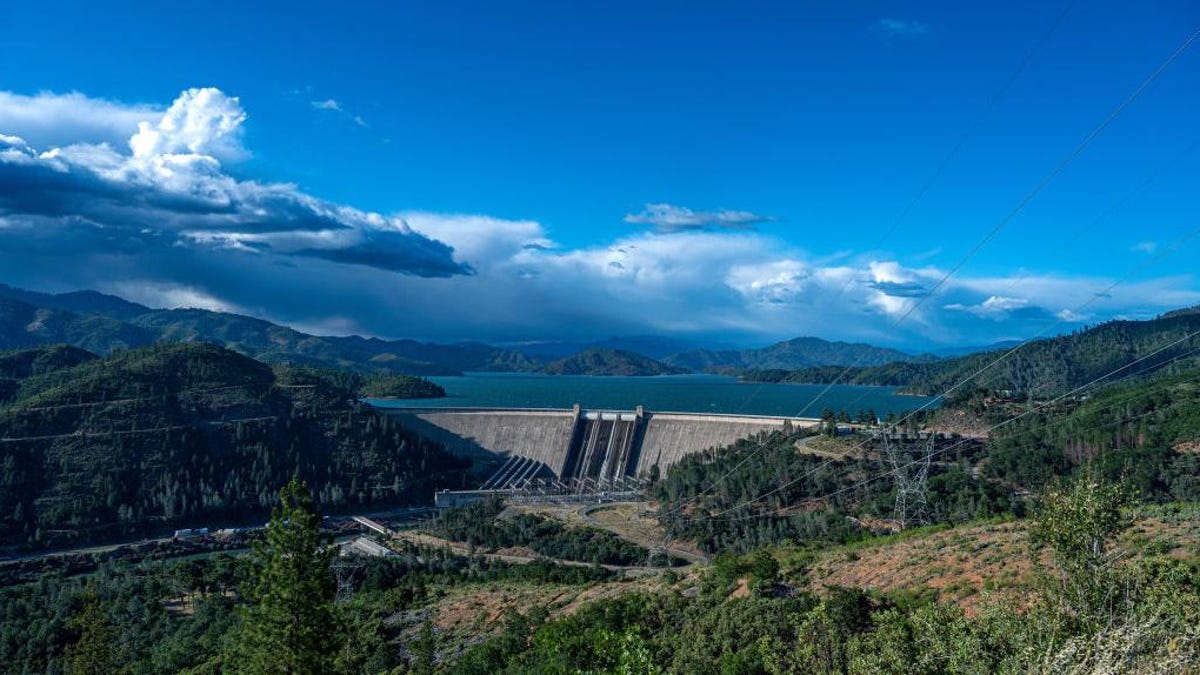A stormy, wet year for California has brought its perilously depleted reservoirs back to life. The state’s “water year” ended this past Saturday, with officials noting that reservoirs throughout California are at 128% of their historical average, the Associated Press reports.
The U.S. In For A Dry Winter | Extreme Earth
Oroville Lake is currently at 136% of historical average this week, per a statement from the California Department of Water Resources. Water levels are up 64% of average from this time last year, and Oroville is currently at 73% capacity. How things change: This time last year, Oroville Lake sat at only 35% capacity. A hundred miles away, Shasta Lake is currently at 74% capacity; this time last year, it was at only 33% capacity.
Lake Oroville’s recovery marks the largest increase in the California State Water Project’s history. Heavy rain and snow also helped the Water Project to capture 3.5 million acre-feet in reservoirs since last December, according to the Department of Water Resources. (A single acre foot is about 326,000 gallons of water.)
The water rebound comes after a series of winter storms earlier this year dropped huge amounts of snow on mountain tops throughout California. This boosted water supply as the snow melted during the spring and summer. In early April, officials with the California Department of Water Resources went to Phillips Station near Lake Tahoe to conduct the end-of-winter snowpack survey. They measured more than 126 inches of snow depth, which was 221% of average snow levels for the end of the season, the department said in a statement.
Those conditions were a far cry from early 2022. The end-of-winter snowpack then was only about 2.5 inches. The low snow levels meant that there would not be enough snowmelt to boost waterways throughout California. Last year, most of the state was experiencing moderate to exceptional drought conditions, according to data from the U.S. Drought Monitor. The state’s lakes and reservoirs dropped so low that officials worried they would lose the ability to produce hydroelectric power.
2023 brought very different conditions. As of late September and into early October, almost no part of California is experiencing any drought or abnormally dry conditions.
According to California officials, the whiplash switch from dry to wet may be due to El Niño’s formation. This global shift comes with warmer water in the Pacific Ocean and changing weather patterns.
It’s likely that the West will experience yet another “wet season under strong El Niño conditions,” according to the Department of Water Resources. The new water year began on October 1; the state receives most of its rain and snow during this time of the year.
And though steady rainfall is welcome after years of megadrought, communities throughout California have struggled through the recent extreme weather. Areas have seen people trapped in their homes after heavy snowfall; there have been power outages and mudslides. The abundance of water paired with the El Niño conditions could lead to another round of floods. In anticipation of this risk, the Department of Water Resources is working with communities on flood training and providing funding for to boost preparedness.
Want more climate and environment stories? Check out Earther’s guides to decarbonizing your home, divesting from fossil fuels, packing a disaster go bag, and overcoming climate dread. And don’t miss our coverage of the latest IEA report on clean energy, the future of carbon dioxide removal, and the invasive plants you should rip to shreds.
This post was modified on 2023-10-05 02:50:14
